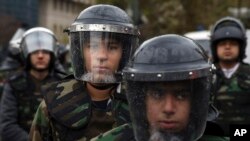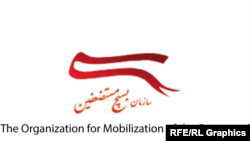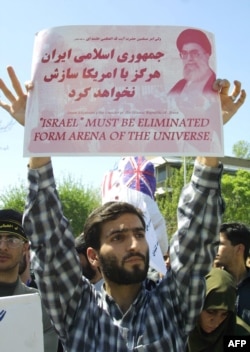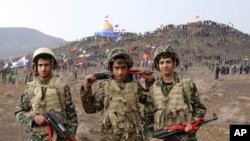Shortly after the 1979 revolution, Ayatollah Ruhollah Khomeini, the founder of Iran’s Islamic Republic, gave a speech to the Islamic Revolutionary Guards Corps (IRGC) and emphasized that the country needed a 20 million-strong army to be able to defend itself against its enemies, particularly the United States.
Iranian sources consider that date the official establishment of the Basij (the name means mobilization). However, the related law was only passed in June 1980.
It states that the purpose of the Basij is "to train and organize all volunteers for encountering any threat and invasion against the accomplishments of the Islamic revolution from inside and outside.”
The law also places the Basij organization under the control of the supreme leader; however, in practice, it has always been supervised by the IRGC.
When Iraq under Saddam Hussein invaded Iran in September 1980, the ayatollahs faced a challenge in defending the country. They had weakened the country’s military by executing or imprisoning many high-ranking military officers, allegedly for being loyal to the previous regime or being involved in suppressing the revolutionaries.
Under such circumstances, the Basij started to recruit millions of volunteers for the war. Without the contribution of the so-called Basijis, Iran most probably would have lost the war to Saddam’s army.
When the war was over, the IRGC started to use the Basij for staging propaganda events in support of the regime. For instance, when the supreme leader calls for a rally in support of the system or against Western countries, the Basijis are the first on the scene and encourage or even force others to attend.
During the presidency of Mohammad Khatami (1997-2005), who attempted some political reforms, Basijis became thugs attacking reformist politicians, journalists, students, or anyone critical of the conservative establishment.
The height of their notoriety was the protests against the re-election of Mahmud Ahmadinejad as Iran’s president in 2009, when they were armed by the IRGC to suppress protesters.
In addition to beating up supporters of the so-called Green Movement and handing them over to security forces, they were also responsible for killing dozens. Their most famous victim was a 26-year-old woman who was shot by a Basiji in June 2009 in downtown Tehran. The video of her tragic death shook the country and the world. Later, a suspect was arrested who carried a Basij identity card.
The Basij also does significant recruitment in schools. The recruits are separated into categories, "Omidan" (Hopes, in elementary schools); "Pouyandegan" (Seekers, in middle schools) and "Pishgaman" (Standard Bearers, in high schools).
Inside The Mind Of Iran's Basij By Golanz Esfandiari
A Basiji posted the account of his day during the February 2011 protests on his blog, Trench of the Strategic Battle, and we have translated some excerpts:
We reached the [base]. Everything was secret. We were the only one who knew about it, [along with] the locals, cars that were passing by, and finally foreign spies!!! We were supposed to have lunch and wait until they told us where to go. After waiting -- which has become routine for the Basij -- the commander talked to us and gave us some old advice. When he was about to leave, everyone shouted, “What happened to lunch?!” and at the same moment the deployment order came. After some preparation they started distributing some snacks. I didn’t receive any Sandis and cake, we didn’t even get straws that we could poke into opposition leader Mehdi Karrubi’s eyes. [eds: Snacks and drinks, including Sandis juices, were reportedly distributed at some progovernment demonstrations, prompting the opposition to say participants and Basij members only go to these events for the refreshments.] Read More










